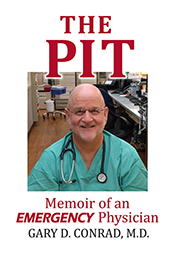Hi Dr. Gary,
I have chronic pain in some of my joints, which my doctor says is due to osteoarthritis. I’ve been taking ibuprofen with some improvement, but I’ve been wondering if you could recommend any other remedies? I appreciate any help you might be able to give.
Hillary
Hi Hillary,
Osteoarthritis is the degeneration of joint cartilage and underlying bone, usually from middle age upward. Prior overuse and/or injury can be precipitating factors. The most common treatment utilizes nonsteroidal anti-inflammatory drugs (NSAIDS), which work by inhibiting production of prostaglandins, thus reducing inflammation and pain. Taking such medications, which include aspirin, ibuprofen, naproxen, among others, is generally considered to be safe if taken episodically, but chronic dosing, especially in older patients, has the potential for serious side-effects, including life-threatening gastrointestinal bleeding from peptic ulcer disease, acute renal failure, and a litany of other problems. A general rule of thumb is that NSAIDS should be used at the lowest effective dose for the shortest period of time.
So, what should you do after taking a limited course of NSAIDS? Do you have to give up and accept suffering? Consider joint replacement surgery? Not to worry, other options are available. One excellent choice is turmeric. This bright-yellow spice from India often used in curries has been shown to have significant anti-inflammatory activity, and in an Italian study, demonstrated greatly decreased osteoarthritis pain as well as reduced need for NSAIDS. I recommend culinary use and/or supplements fortified with the active ingredient of turmeric, curcumin, to get the maximal effect. Another anti-inflammatory spice worth considering is ginger, taken either as a supplement or included in your diet. Also, think about adding evening primrose oil (EPO) to your regimen, which has beneficial anti-inflammatory activity. Other supplements to ponder include glucosamine sulfate, with or without chondroitin sulfate, realizing it can take up to two months to see results, and SAMe, which seems to be as effective as NSAIDS, but requires about a month of treatment before you might notice improvement.
Of course, it goes without saying that if you are overweight, weight loss can substantially improve osteoarthritis pain. Exercise can be beneficial, though if your symptoms are worse in your lower extremities, I would consider swimming, water aerobics, or stationary cycling to minimize further joint trauma. As a footnote, acupuncture has shown promise in the treatment of osteoarthritis. In one trial, one-fourth of arthritis patients who had been scheduled for knee surgery cancelled their operations because of improvement with acupuncture, and now some rheumatologists recommend acupuncture as an adjunctive therapy along with conventional medication.
Since information exists that suggests osteoarthritis is likely an inflammatory process, please consider a diet that is anti-inflammatory, rich in omega-3 fatty acids (wild-caught salmon, walnuts, freshly ground flaxseed, algal oil, etc.), along with plenty of different colored fresh fruits and vegetables. Likewise, you should avoid foods which are proinflammatory in nature, such as partially hydrogenated oils (margarine and vegetable shortening), and polyunsaturated vegetable oils.
In closing, I can personally attest to the benefit of an integrative approach to osteoarthritis. If you have read Oklahoma Is Where I Live, you know that some decades ago, I was told that due to osteoarthritis, I would need bilateral hip replacements. I resisted the notion and found that by simply doing Iyengar yoga, my symptoms were much improved. Years later, when my hips started once again with that gnawing, aching discomfort, sometimes waking me up at night, in addition to yoga I added a regimen that included fortified turmeric, EPO, and algal oil, along with my usual anti-inflammatory diet. This resulted in remarkable improvement, and while someday I may have to consider hip replacement, currently my symptoms are much improved, and for that, I am most grateful.
The medical/health information is provided for general educational and informational purposes only, and is not a substitute for personal, professional advice. Accordingly, before taking any recommendations based on the information here, please consult with your primary care provider and/or appropriate professionals.

 Gary D. Conrad
Gary D. Conrad





Leave a Reply